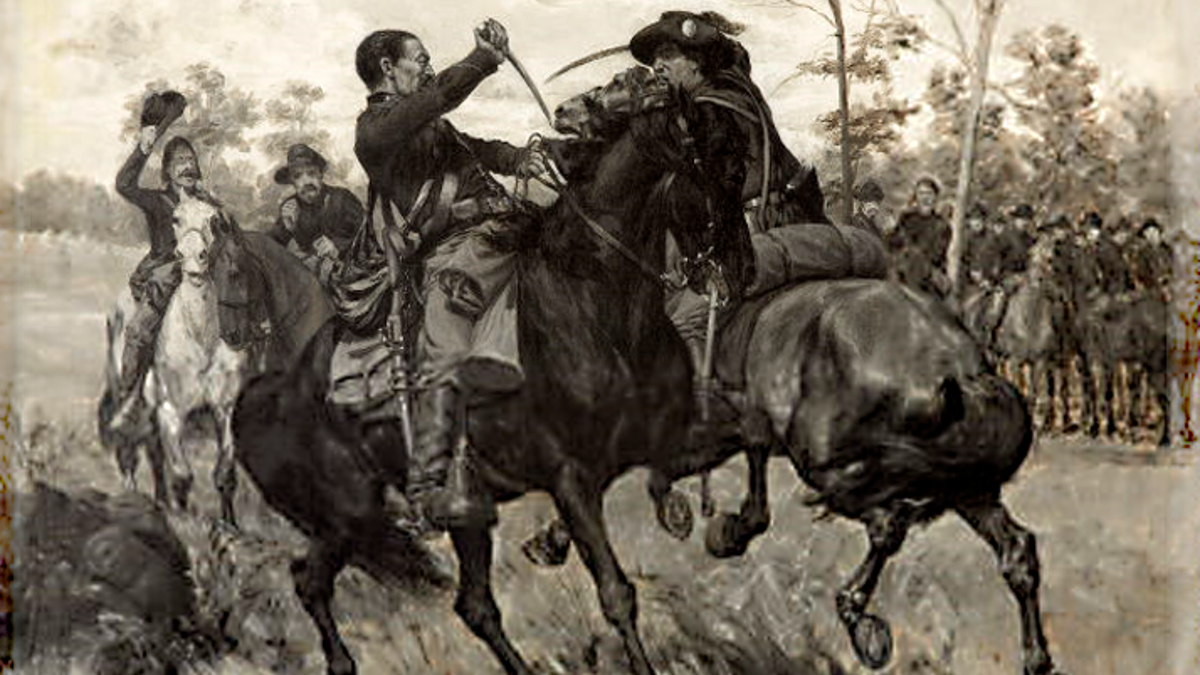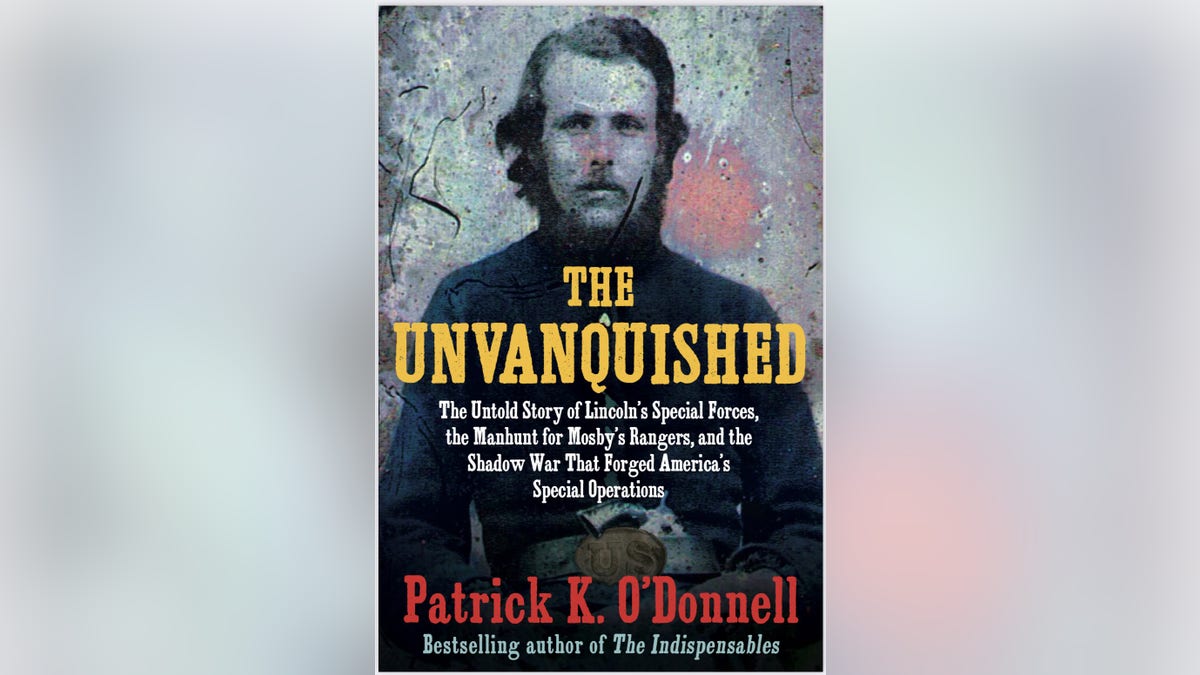Fox News Flash top headlines for May 3
Fox News Flash top headlines are here. Check out what's clicking on Foxnews.com.
As Vietnam, Iraq and Afghanistan have proven, insurgencies are very difficult to defeat. If the insurgents have the support of the local population, they are nearly impossible to vanquish. Countering them requires individuals with special skills who utilize every resource, from intelligence to a kind word with a gun. American counterinsurgency was born from a forgotten company of Ohio’s Confederate manhunters: Blazer’s Scouts.
"Make sure your piece is in condition for use" — the hushed command went down the line as a disciplined lieutenant halted his men, ensuring they were ready for action. The Union Scouts had awakened before dawn and "were again threading the mountain by-paths in silence — no word above a whisper dared any man to speak," acting as guerrillas and applying the unconventional skills of the very men they hunted deep behind Southern lines in the crags of West Virginia’s Appalachia.
Thirty-four-year-old Lieutenant Richard Blazer and his Scouts would emerge as some of the war’s most unlikely heroes. The Ohioan had no martial bearing, with "a faraway look in one eye, and a nearby sleepy look in the other." He sported a disheveled look: his vest improperly buttoned, coat collar out of whack, boots scuffed. Lacking spit and polish, Blazer flopped on the parade ground, often issued the wrong commands, and marched out of sync. Despite his quirks, he cared deeply about his men.
LAST SURVIVING MEDAL OF HONOR RECIPIENT FROM THE KOREAN WAR LIES IN HONOR AT US CAPITOL
Independent in thought, the Federal officer tackled problems with steely silence. He despised red tape and was described as "indifferent to both its color and its texture." Blazer was a man of action who led from the front and hurled himself into the heart of combat, "one [on] whom dependence could be placed in an emergency."

This William B. T. Trego painting depicts a cavalry duel that took place during Confederate Gen. Jeb Stuart’s famous ride around Union Gen. George McClellan as part of the American Civil War.
That emergency manifested itself in the form of Southern irregulars, Thurmond’s Rangers, a band of Confederate "cutthroats" led by the Thurmond brothers, who had "long been feared and for good reason." They were ravaging the Union Army of West Virginia, conducting a guerrilla war, raiding outposts and picking off Union patrols near the New River Gorge.
The full details of this remarkable counterinsurgency unit are told in my upcoming book, "The Unvanquished: The Untold Story of Lincoln’s Special Forces, the Manhunt for Mosby’s Rangers, and the Shadow War That Forged America’s Special Operations."
The book reveals the drama of the irregular guerrilla warfare that altered the course of the Civil War, including the story of Blazer’s Scouts, part of Lincoln’s special forces who donned Confederate gray to hunt Confederate commander John S. Mosby and his Rangers from 1863 to the war’s end at Appomattox — a previously untold story that inspired the creation of U.S. modern special operations in World War II. The book also captures the story of the Confederate Secret Service.
Only experienced woodsmen and excellent marksmen were chosen. These handpicked volunteers of various Ohio Infantry Regiments would form the nucleus of this burgeoning elite unit. Some of the men had been Jessie Scouts in General Robert H. Milroy’s command.

Bestselling author Patrick K. O'Donnell’s forthcoming book on the Civil War is titled: "The Unvanquished: The Untold Story of Lincoln’s Special Forces, the Manhunt for Mosby’s Rangers, and the Shadow War That Forged America’s Special Operations."
Later, the commandos expanded recruitment to other units, including the cavalry. Along with being picked men, the unit also acquired a moniker. While the name’s origins are unknown, and it may have even originated with their Confederate adversaries after the war, the Scouts gained the lofty title of Legion of Honor. Later, the Army referred to the men as Blazer’s Independent Scouts.
The soldiers volunteering as Scouts knew they were signing up for extremely hazardous duty. On their first mission, Blazer commanded at least half the company but remained silent on his intentions.
CLICK HERE FOR MORE FOX NEWS OPINION
Blazer effectively employed a bedrock element of counterinsurgency tactics: intelligence. He operated with kind words and a smile, which loosened tongues. The Ohio officer "questioned every woman and child he saw." Eliciting the tiniest nuggets of information from deliberate shoe-leather detective work, he assembled and fitted the intelligence into a mosaic that resided exclusively in his mind. But over time, Blazer’s approach bore fruit.
Lieutenant Harrison Gray Otis from the 12th Ohio Infantry, a printer and ardent Republican who would become the founder and publisher of the Los Angeles Times after the war, shared command with Blazer.
The book reveals the drama of the irregular guerrilla warfare that altered the course of the Civil War, including the story of Blazer’s Scouts, part of Lincoln’s special forces who donned Confederate gray to hunt Confederate commander John S. Mosby and his Rangers from 1863 to the war’s end at Appomattox — a previously untold story that inspired the creation of U.S. modern special operations in World War II.
At about midnight on their first patrol, the hunters halted and made camp. While his men slept, Blazer kept guard. Leading by example, he willingly endured the same hardships as his men. Before dawn, the men broke camp to resume the manhunt. They wove silently through the mountain trails for over an hour until the camp of unsuspecting sleeping Confederates came into view.
CLICK HERE TO GET THE FOX NEWS APP
The Yankee lieutenant fired a volley into Thurmond’s bivouac as the Scouts yelled, charged and managed to capture over a dozen prisoners, horses, and a small herd of cattle before their enemy was fully awake.
After a brief firefight, the remnants of Thurmond’s gang fled, disappearing into the mountains. Thurmond’s Rangers would prove to be a worthy adversary against which Richard Blazer and Lincoln’s Special Forces honed the skills they would use to hunt the greatest American guerrilla warrior of all time: John Singleton Mosby and his Rangers.
